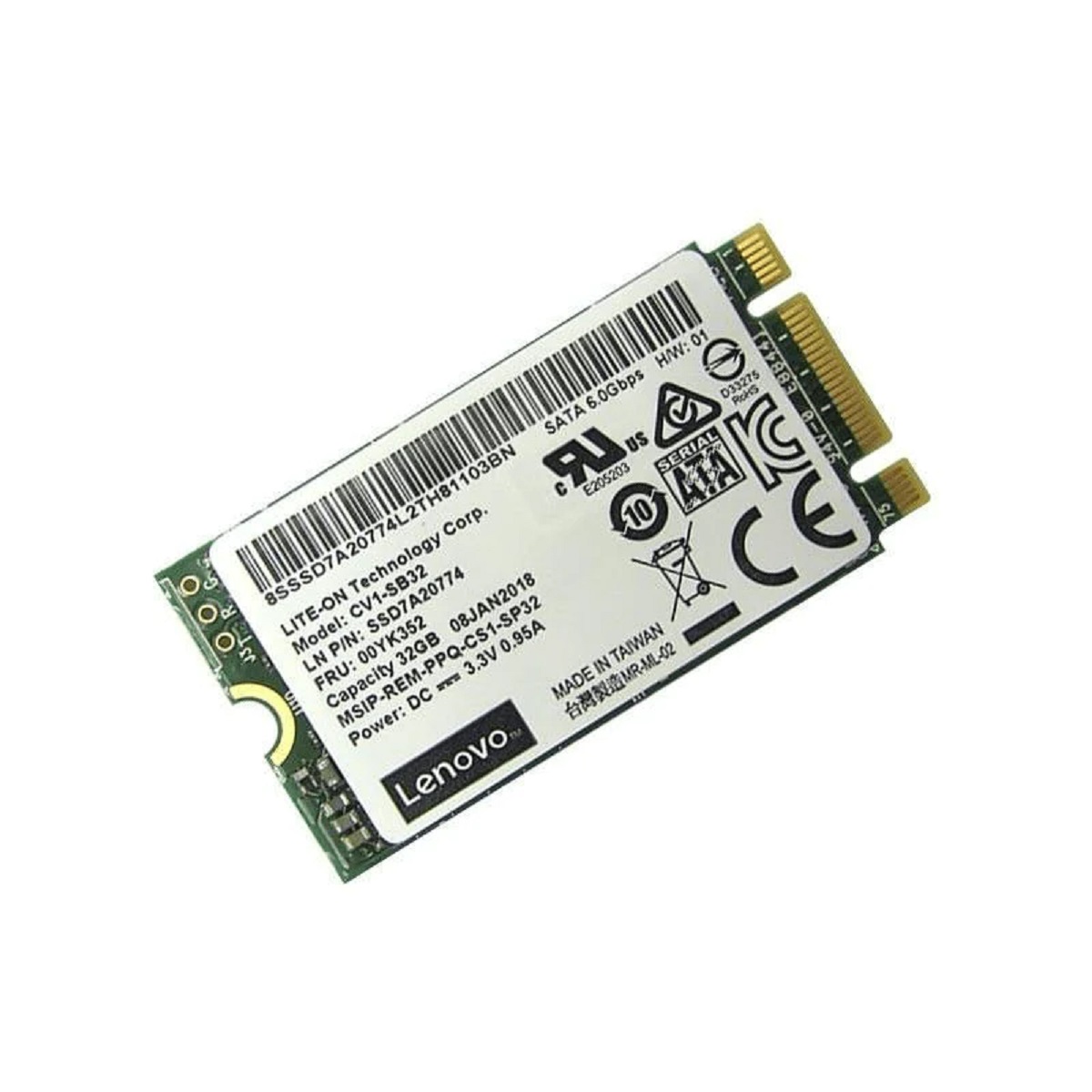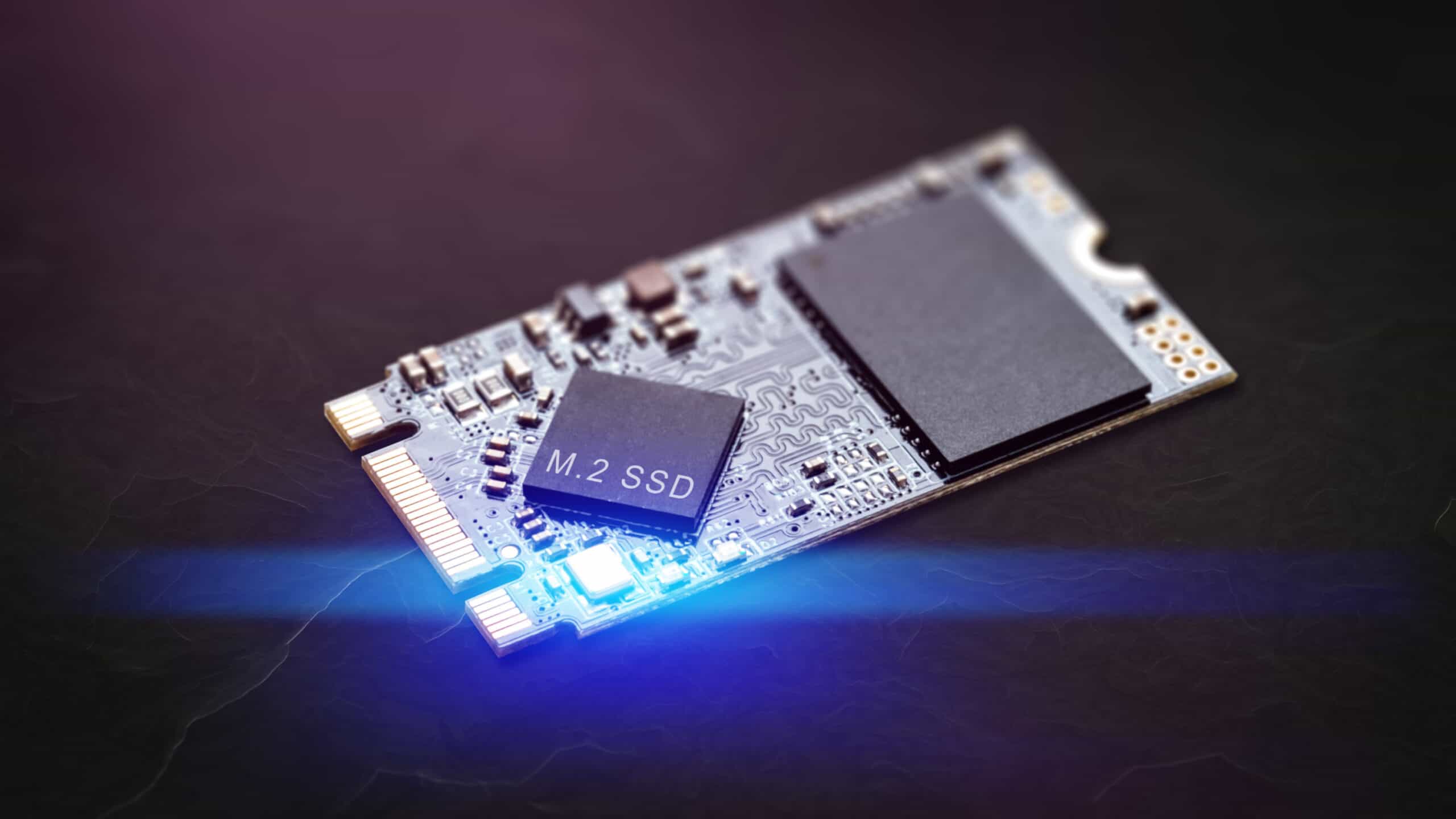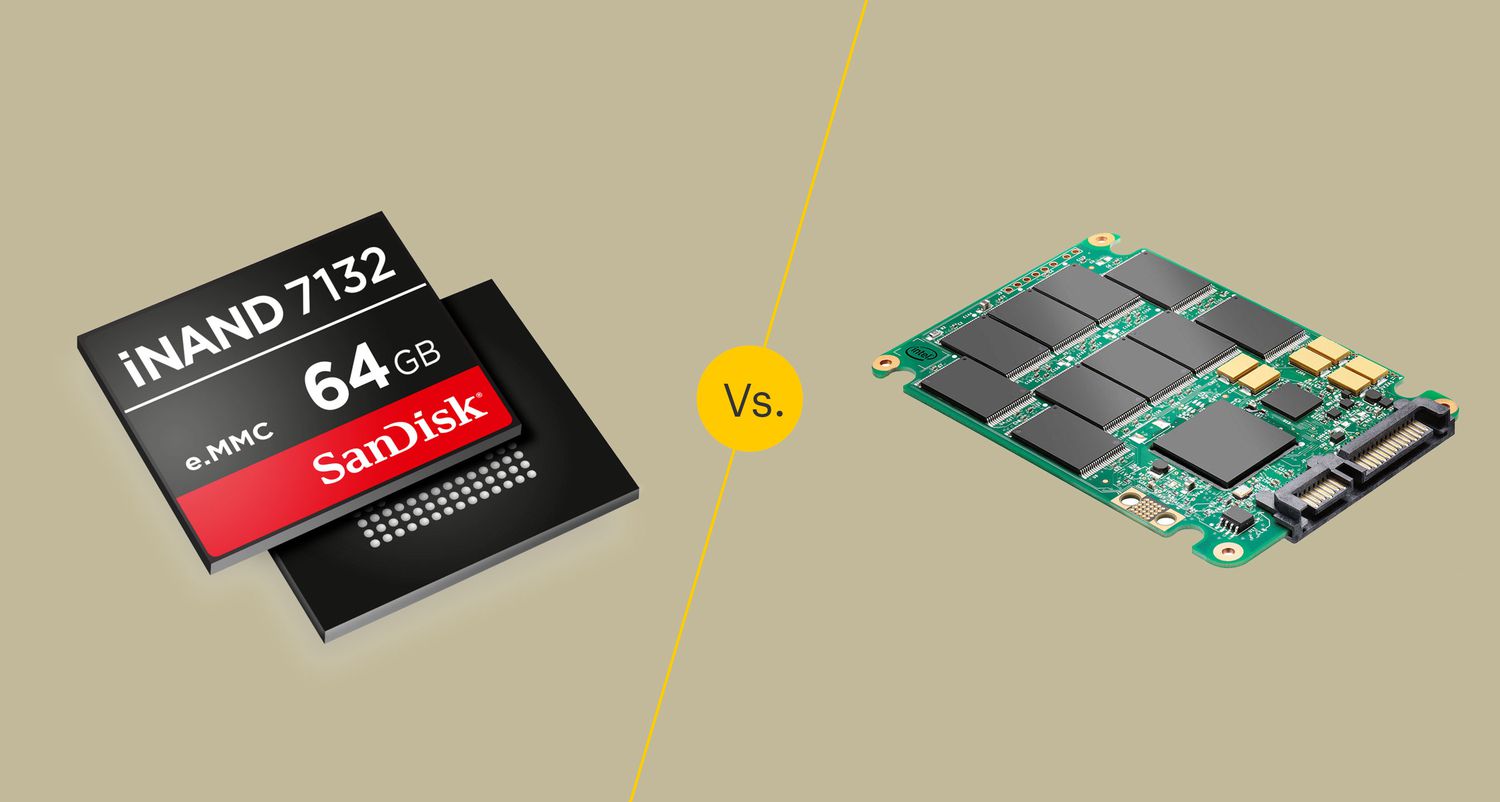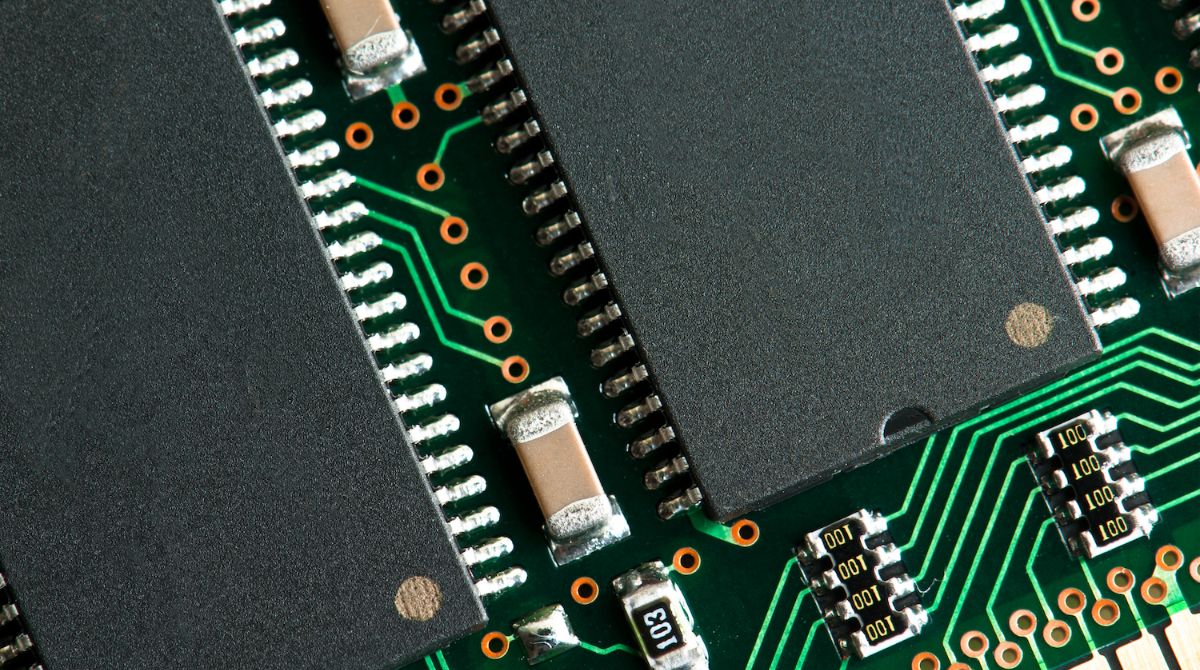What Is eMMC Storage
eMMC, which stands for Embedded MultiMediaCard, is a type of storage commonly found in smartphones, tablets, and other portable devices. It is a compact form of non-volatile memory that combines flash storage and a controller into a single chip.
The key feature of eMMC storage is its integration of both the storage components and the controller onto a single chip. This means that eMMC storage is highly compact and space-efficient, making it ideal for devices where size and weight are important factors.
eMMC storage uses NAND flash memory, a type of solid-state storage that retains data even when the power is turned off. The controller in eMMC storage manages the data transfer between the storage and the device’s processor, ensuring efficient and reliable performance.
While eMMC storage offers certain advantages in terms of size and cost, it is important to note that it is not as fast or durable as other types of storage, such as SSDs (Solid State Drives).
In terms of speed, eMMC storage typically has slower read and write speeds compared to SSDs. This means that tasks such as booting up the device or opening large files might take slightly longer with eMMC storage.
However, eMMC storage is still perfectly suitable for most everyday tasks like web browsing, social media, and multimedia playback.
Moreover, eMMC storage is often more affordable compared to SSDs, making it a popular choice for budget-friendly devices. The lower cost of eMMC storage allows manufacturers to offer devices at a more accessible price point without compromising on overall quality.
In summary, eMMC storage is a compact and cost-effective storage solution commonly used in smartphones, tablets, and other portable devices. While it may not offer the same performance and durability as SSDs, eMMC storage is still capable of delivering reliable performance for most everyday tasks.
What Is SSD
SSD, short for Solid State Drive, is a type of storage device that uses flash memory to store data persistently. Unlike traditional hard disk drives (HDDs) that rely on mechanical components to read and write data, SSDs use integrated circuits to store and retrieve data quickly.
One of the key advantages of SSDs is their speed. Due to the absence of moving parts, data access and transfer times on SSDs are significantly faster than HDDs. This translates to quicker boot times, faster application loading, and improved overall system performance.
SSDs are available in various form factors, including 2.5-inch drives for laptops and desktops, as well as M.2 and PCIe cards for high-performance applications. They come in different capacities ranging from 128GB to several terabytes, allowing users to choose the size that best suits their needs.
In addition to speed, SSDs also offer enhanced durability compared to HDDs. With no moving parts, SSDs are less susceptible to physical damage caused by drops or excessive vibrations. They are also immune to magnetic fields, making them less prone to data corruption.
The durability of SSDs is further enhanced by wear-leveling technology, which evenly distributes data writes across the memory cells to prevent premature wear on any particular area. This helps to prolong the lifespan of SSDs and ensure consistent performance over time.
Another advantage of SSDs is their energy efficiency. Since SSDs don’t require power to move mechanical parts, they consume less energy compared to HDDs. This can lead to improved battery life in portable devices and reduced electricity costs in desktop computers and servers.
While SSDs offer numerous benefits, it’s important to note that they are generally more expensive than HDDs on a per-gigabyte basis. However, as technology advances and costs continue to decrease, SSDs are becoming more affordable and widely adopted.
In summary, SSDs provide fast and reliable storage solutions with improved performance, durability, and energy efficiency compared to traditional HDDs. As prices become more accessible, SSDs are increasingly becoming the preferred choice for both personal computing and enterprise environments.
Differences Between eMMC Storage and SSD
While both eMMC storage and SSDs are types of solid-state storage, they have significant differences in terms of performance, durability, and cost.
Performance: SSDs are generally faster than eMMC storage when it comes to read and write speeds. This means that tasks such as booting up the device, opening large files, and running demanding applications will be noticeably quicker on an SSD. eMMC storage, on the other hand, may have slightly slower performance, which is more suitable for everyday tasks like web browsing and multimedia playback.
Durability: SSDs are more durable than eMMC storage due to their advanced design and technology. SSDs have no moving parts, which makes them resistant to physical damage caused by drops or vibrations. They are also better equipped to handle extreme temperatures and are less prone to data corruption. eMMC storage, while still reliable for regular use, may be more susceptible to wear and tear over time.
Cost: eMMC storage is typically more cost-effective compared to SSDs. The integration of flash storage and a controller into a single chip makes eMMC storage a more affordable option, especially for budget-friendly devices. SSDs, on the other hand, tend to be more expensive due to their higher performance and durability features. However, as technology advances and economies of scale come into play, the price gap between the two storage options is gradually narrowing.
Overall, the choice between eMMC storage and SSDs will depend on your specific needs and budget. If you require fast and reliable storage for demanding tasks or gaming, SSDs are the preferred choice. However, if you are on a tight budget or have more modest computing needs, eMMC storage can still offer satisfactory performance for everyday use.
It’s worth noting that some devices, particularly lower-end smartphones and tablets, may only offer eMMC storage as the default option. In such cases, users who require faster performance or more storage capacity can consider external SSDs for additional storage or data backups.
Performance Comparison
When comparing the performance of eMMC storage and SSDs, there are several key factors to consider:
Speed: SSDs have a significant advantage over eMMC storage in terms of speed. SSDs offer faster read and write speeds, resulting in quicker application loading times, faster file transfers, and improved overall system responsiveness. On the other hand, eMMC storage, while capable of delivering satisfactory performance for everyday tasks, may experience slightly slower read and write speeds, leading to slightly longer boot times and file access.
Random Access: SSDs excel in random access performance, which refers to the ability to access and retrieve data from different locations on the storage device simultaneously. This is particularly important for tasks that involve multiple simultaneous operations, such as multitasking or running complex software. eMMC storage, while still capable of handling these tasks, may experience slower random access speeds compared to SSDs.
Sequential Read and Write Speeds: SSDs offer faster sequential read and write speeds compared to eMMC storage. Sequential read speed refers to the rate at which data can be read from consecutive locations on the storage device, while sequential write speed refers to the rate at which data can be written to consecutive locations. Higher sequential read and write speeds result in faster data transfers for large files, such as video editing or gaming. eMMC storage, while not as fast as SSDs in this aspect, can still handle sequential tasks effectively for most everyday use cases.
Response Time: SSDs have significantly faster response times compared to eMMC storage. Response time refers to the time it takes for the storage device to respond to data access requests. This is particularly important for tasks that involve low-latency requirements, such as gaming or real-time application usage. SSDs provide near-instantaneous response times, allowing for smooth and fluid user experiences. eMMC storage, while generally responsive, may have slightly higher response times compared to SSDs.
In summary, SSDs outperform eMMC storage in terms of speed, random access performance, sequential read and write speeds, and response times. This makes them the preferred choice for tasks that require fast and efficient data access, such as gaming, video editing, or running resource-intensive software. However, it’s important to note that eMMC storage is still capable of delivering satisfactory performance for everyday tasks, making it a viable option for cost-sensitive users or devices with more modest computing requirements.
Durability Comparison
When comparing the durability of eMMC storage and SSDs, there are several factors to consider:
Physical Durability: SSDs are more durable than eMMC storage when it comes to physical resilience. SSDs have no moving parts, which makes them less susceptible to damage from drops, shocks, and vibrations. This makes them ideal for use in portable devices that are likely to experience rough handling. eMMC storage, while still reasonably durable, may be more prone to physical damage due to its integrated design.
Resistance to Environmental Factors: SSDs are also more resistant to environmental factors such as extreme temperatures, humidity, and dust. They are designed to function reliably in a wide range of environmental conditions. eMMC storage is also built to withstand moderate environmental conditions but may be less resilient compared to SSDs.
Data Integrity: SSDs have advanced error correction mechanisms and wear-leveling technology, which help to maintain data integrity and prolong the lifespan of the drive. These features ensure that data remains intact and protected from potential errors or failures. eMMC storage, while generally reliable, may not offer the same level of data integrity and protection as SSDs.
Magnetic Fields: SSDs are immune to magnetic fields, making them less susceptible to data corruption caused by magnetic interference. This is an important advantage over traditional hard disk drives (HDDs) that use magnetic storage. eMMC storage, like SSDs, is also immune to magnetic fields, providing an added layer of protection against data loss.
Wear and Tear: SSDs are designed to handle extensive read and write operations without experiencing performance degradation. Wear-leveling technology distributes the data writes evenly across the drive, preventing specific areas from wearing out prematurely. This ensures consistent performance over time. eMMC storage, while durable for regular use, may experience wear and tear at a faster rate compared to SSDs.
Overall, SSDs offer greater durability than eMMC storage when it comes to physical resilience, resistance to environmental factors, data integrity, protection against magnetic fields, and long-term wear and tear. However, it’s important to note that eMMC storage can still provide satisfactory durability for everyday use, making it a viable option for budget-friendly devices or those with more modest durability requirements.
Cost Comparison
When considering the cost of eMMC storage and SSDs, there are several factors to take into account:
Pricing: eMMC storage is generally more cost-effective compared to SSDs. The integration of flash storage and a controller into a single chip makes eMMC storage a more affordable option, especially for devices with smaller storage capacities. This makes eMMC storage a popular choice for budget-friendly devices or those targeting a more price-sensitive market segment.
Capacity: SSDs are available in a wider range of storage capacities compared to eMMC storage. SSDs offer options ranging from 128GB up to several terabytes, catering to users with higher storage requirements. eMMC storage, on the other hand, tends to have lower capacity options, typically up to 256GB. This difference in capacity options can impact the overall cost of the storage solution.
Performance: The improved performance of SSDs comes at a higher cost compared to eMMC storage. SSDs offer faster read and write speeds, better random access performance, and quicker response times, making them ideal for users who require high-performance storage solutions. The higher price tag reflects the superior performance capabilities of SSDs.
Longevity: SSDs tend to have a longer lifespan compared to eMMC storage. SSDs are built with advanced wear-leveling technology that evenly distributes write operations across the memory cells, prolonging the drive’s overall lifespan. This translates to better long-term value for users. While eMMC storage still offers satisfactory durability, it may not have the same level of longevity as SSDs.
Overall Value: The choice between eMMC storage and SSDs boils down to the balance between cost and performance. If budget is a primary concern and the performance requirements are relatively modest, eMMC storage can offer good value for everyday use. On the other hand, if performance and longevity are top priorities, SSDs provide a higher value proposition despite the higher price point.
It’s essential to consider your specific needs and budget when making a storage choice. Assess the storage requirements of your intended use cases and weigh the cost against the desired performance level. For users who require high-speed performance, larger storage capacities, and extended longevity, SSDs are likely the more suitable choice, albeit at a higher cost. However, for those with more budget constraints or less demanding needs, eMMC storage can provide a cost-effective option that still delivers satisfactory performance.
Which One Should You Choose
When deciding between eMMC storage and SSDs, it ultimately depends on your specific needs, budget, and use cases. Here are some considerations to help you make an informed decision:
Performance Requirements: If you require fast and efficient performance for tasks such as gaming, video editing, or running resource-intensive software, SSDs are the recommended choice. Their faster read and write speeds, better random access performance, and quicker response times will provide a more seamless and efficient user experience.
Budget: If you are working with a limited budget or have more modest computing needs, eMMC storage can offer a cost-effective solution. Their integration of flash storage and a controller into a single chip reduces manufacturing costs, making them more affordable. eMMC storage still provides satisfactory performance for everyday tasks such as web browsing, social media, and multimedia playback.
Storage Capacity: If you require larger storage capacities, SSDs offer a wider range of options. With capacities ranging from 128GB up to several terabytes, SSDs can accommodate users with higher storage requirements. eMMC storage typically has smaller capacity options, with maximum capacities ranging up to 256GB.
Durability: SSDs are generally more durable than eMMC storage due to their advanced design and the absence of moving parts. They are more resistant to physical damage from drops, shocks, and vibrations, and can withstand extreme temperatures and environmental factors. If durability is a significant concern, SSDs provide a more reliable choice in the long run.
Overall Value: Consider the balance between cost and performance for your specific needs. If you prioritize performance and longevity, SSDs offer a higher value proposition despite the higher cost. On the other hand, if budget is a primary concern and the performance requirements are relatively modest, eMMC storage can offer a cost-effective solution without sacrificing everyday usability.
Ultimately, the choice between eMMC storage and SSDs depends on your priorities and the specific requirements of your devices and applications. It’s important to assess the performance needs, budget limitations, storage capacity requirements, and desired durability to make an informed decision that aligns with your needs and preferences.

























